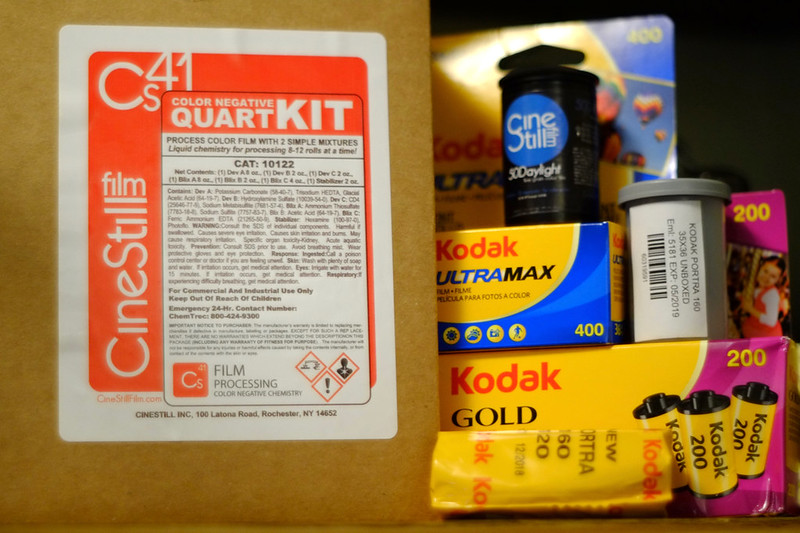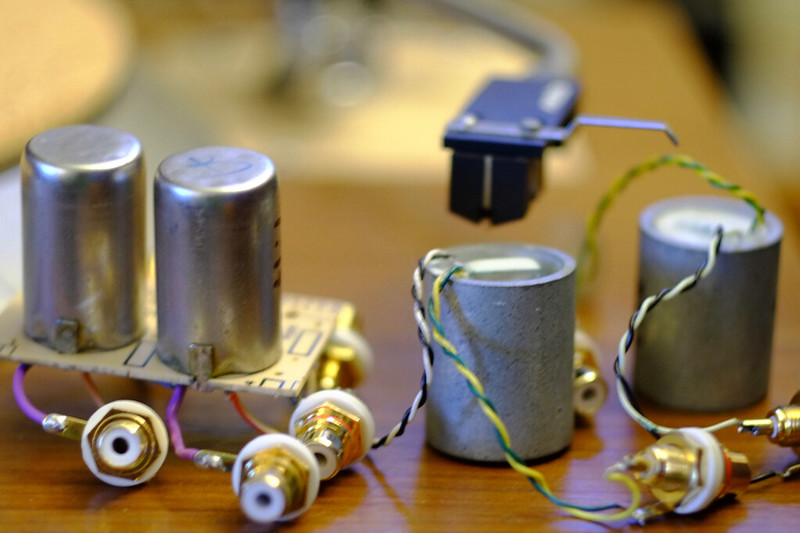Intrigued by an e-newsletter from Freestyle Photographic Supplies, I ordered this color film processing kit, which promised to be just as straightforward as developing B&W film.
Mixing the Chemicals
Developer = 20 oz of distilled water heated to 120° F + Parts A, B & C to make 1 quart
Blix (Bleach/Fixer) = 18 oz of distilled water heated to 125° F + Parts A, B & C to make 1 quart
Preparation
As suggested by the Cs41 website, I got a $25 foot spa from Walmart as a tempering bath for the chemicals and the developing tank.
Temperature is most critical with the developer. Since the foot spa is just a tempering bath and does not heat up water, I filled it up with hot water from the tap, which was between 105-110°F.
Meanwhile, I filled up a pot with hot water from the tap and heated up the developer in this water bath on the stove to my chosen 102° F developing temperature.
Pre-wash
I did a pre-wash to stabilize developing tank temperature at 102°F.
Developing
The developer is ready.
I dumped the pre-wash and poured the developer into the tank. I developed for 3.5 minutes doing 4 inversions every 30 seconds. Tank is submerged in the bath in between inversions.
Developer is poured back into the container. I turned off the foot spa since the Blix stage is not as temperature sensitive.
Blixing
Blix can be used anywhere between 75°F-102°F, so 90.9°F is perfect.
I filled up the developing tank with Blix and did 4 inversions every 30 seconds for the next 8 minutes. After 8 minutes, the temperature inside the developing tank would be just about equivalent to room temperature tap water, which will be used for the wash/rinse cycle.
Blix is poured back into the container.
Wash and Rinse
I filled up the tank with room temperature tap water, did 5-10 inversions and then dumped the water. Repeated this at least 7 times.
Photo-flo
Filled up the tank with fresh tap water (or distilled) and added two drops of photo-flo or the stabilizer from the kit. Left it standing for at least a minute.
Hang to dry
I let the film dry for at least an hour.
Developing at other temperatures
As shown in the above chart, processing can also be done anywhere from 72°-102° F, but developing time can take as long as 50 minutes at colder temperatures.
The Cinestill Cs41 color film developing kit is just as fool-proof as B&W film processing. The only difference is that they are at both ends of the temperature spectrum. Since I've relegated taking color pictures to my trusty Fuji X-E1, I've seriously been considering an upgrade to a full frame digital body. However, this recent experience processing color film has taken the upgrade itch away...😊
Sample pics
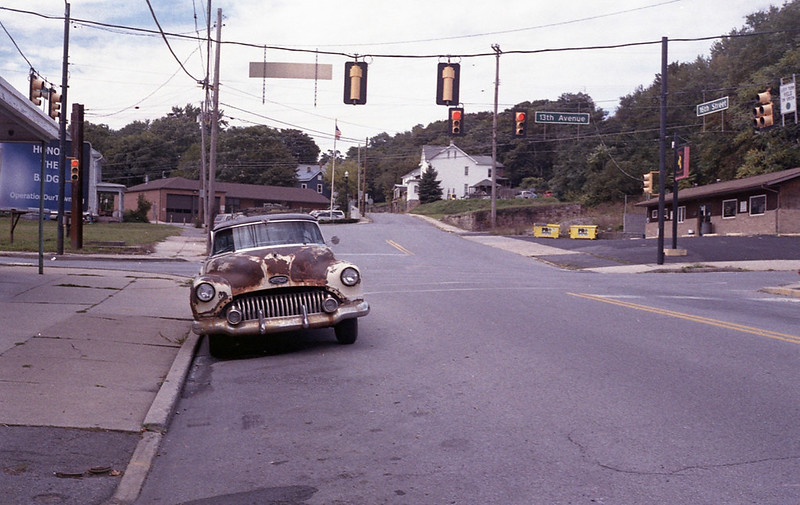 |
| Rollei 35 + Kodak Gold 200 |
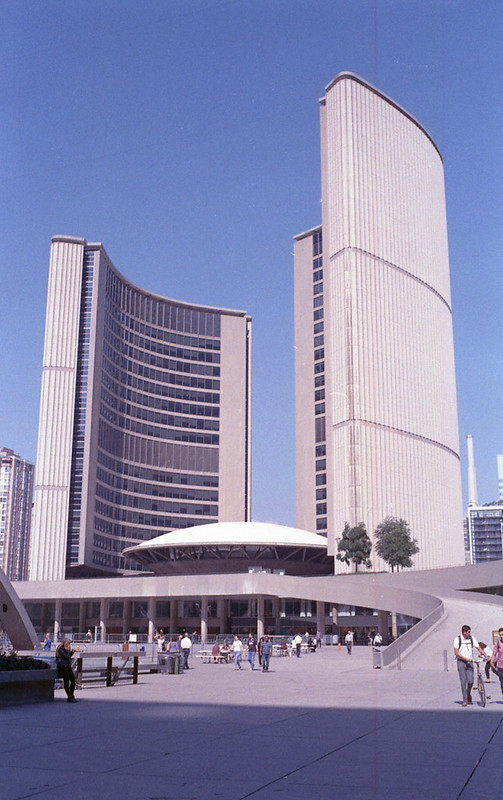 |
| Rollei 35 + Kodak Gold 200 |
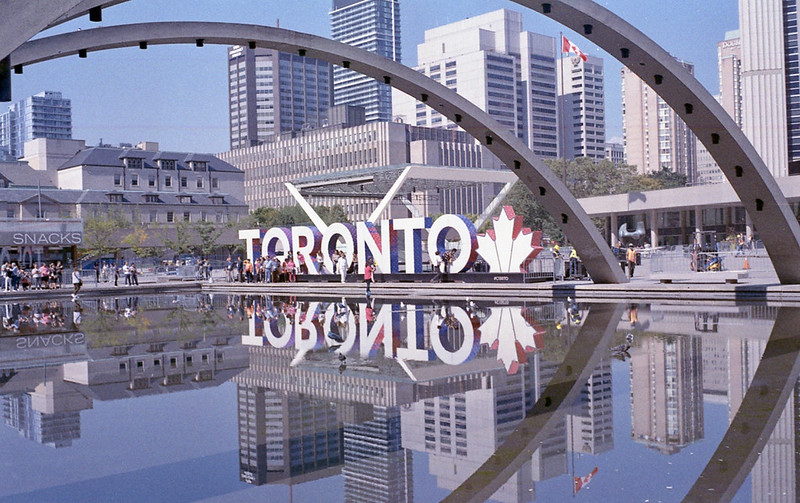 |
| Rollei 35 + Kodak Gold 200 |
 |
| Rollei 35 + Kodak Gold 200 |
 |
| Rollei 35 + Kodak Gold 200 |
 |
| Nikon FG20 + Nikkor E series 50mm f1.8 Expired Fuji Color 100 |
 |
| Leica M6 + Summicron 35mm f2 Kodak Portra 160 |
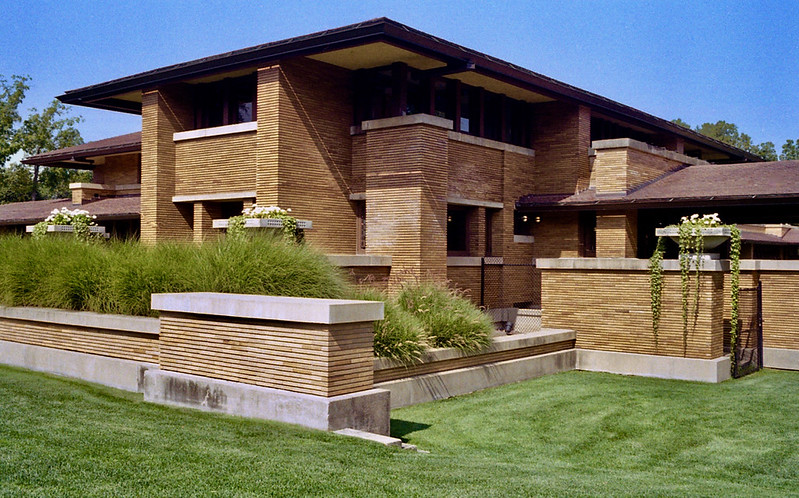 |
| Darwin D. Martin House by Frank Lloyd Wright Buffalo, NY |
more pics
